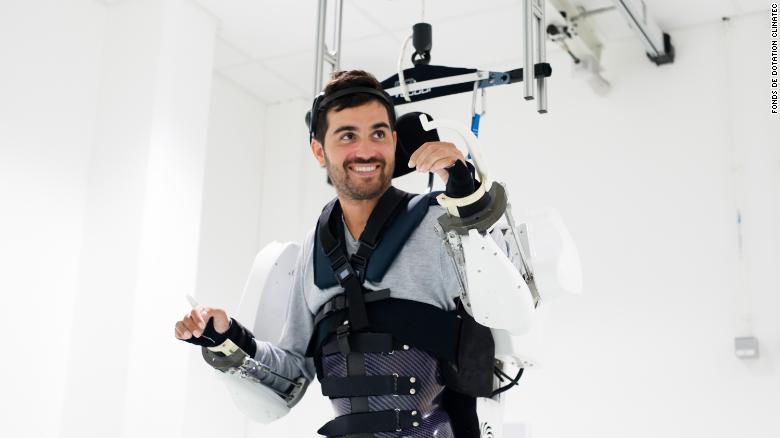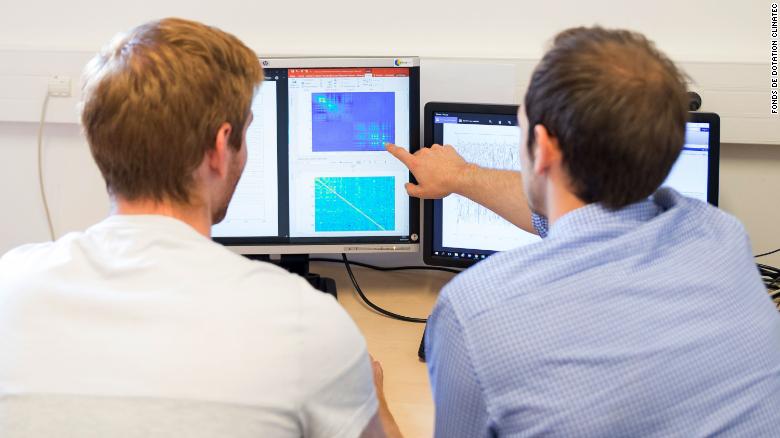Brain-Controlled Robotic Suit Allows A Paralyzed Man To Walk Again
Tags: News

A tetraplegic man, paralyzed in a 40-meter fall, has walked again thanks to an innovative robotic suit. It is controlled and operated by his brain, researchers have revealed. Thibault, 30, could now control all his disabled limbs with this suit.
Thibault, from Lyon in France, severed his spine after a fall from a nightclub balcony. The accident left him paralyzed from the neck down.

Experts from biomedical firm Cinatech, the hospital of Grenoble Alps, and the research center at CEA first implanted 2 devices for recording on each side of Thibault’s head, reaching between the skin his brain. Thibault imagined himself performing basic tasks like reaching out and walking. Electrode grids recorded the signals and analyzed them in the decoding algorithm. That then commanded the exoskeleton to translate them into movements. The system operates by storing and breaking down signals emanating from the brain. It was put to test after a trial period of 2 years.
Also read: First Paralyzed Person Treated With Stem Cells Regained His Upper Body Movement

Thibault trained for several months. He mobilized the signals from his brain to train the algorithm and control the computer simulated device. This allowed him to make basic movements. He learned to control this virtual character, an avatar, with a video game. It learned to walk, reach out and touch 3d and 2d objects.
Before using the exoskeleton he practiced basic virtual simulations. He acquired the skills to operate the exoskeleton and finally walk and reach out to objects.
Also read: Neurosurgeon Had Brain-Computer Interface Installed In His Own Head
Thibault covered 145 meters (476 feet). He walked 480 steps relying on the combination of the avatar (the virtual character), the exoskeleton and the video. The study was published in a neurology journal, The Lancet on October 3, 2019.
It is some time before Thibault is able to walk back home but as of now, he has taken his first small steps. Cervical spine injuries paralyze patients in various degrees in all the four limbs. Thibault has some control over his left wrist and biceps which enables him to operate a wheelchair using a joystick. Scientists say that the device is still in the early experimental stages but has the potential to improve patients’ lives.
Over 5000 people have downloaded our free ebook “Growth Hacking Tips And Rituals For Optimal Living” CLICK HERE to get your free copy now
These findings help researchers move closer to creating devices directly controlled by the brain. They are eventually improving the exoskeleton for better mobility using brain signals, said Professor Stephan Chabardes, author of the study and a neurosurgeon at Grenoble University Hospital. Any paralyzed person will then rely less on external devices like joysticks.
For Thibault, just the ability to walk, stop and reach out is a giant step for him and for the disabled community.
Leave Comment: